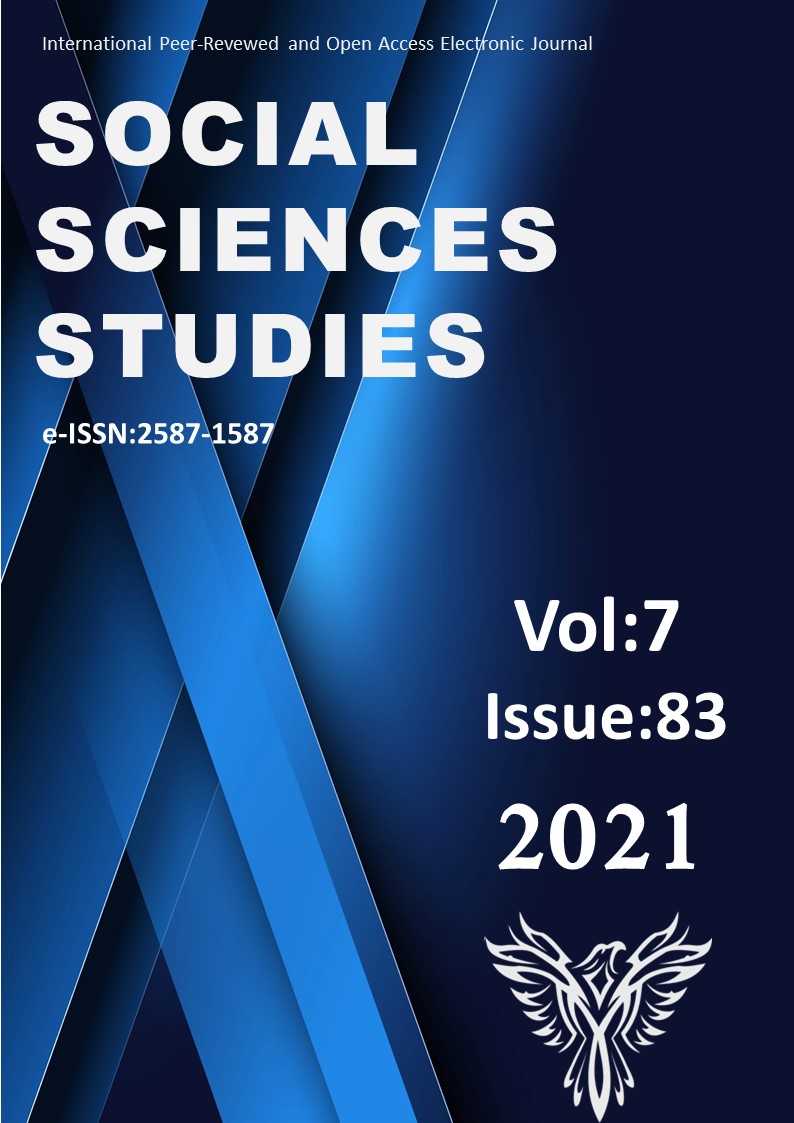Author :
Abstract
Türk Mûsikîsi icrâcıların sıklıkla dillendirdiği “bu makâmda şu perde daha tiz, şu makâmda ise biraz daha pest olmalı” gibi perdelerin nasıl konumlandırılacağına dair ifadeler, şimdiye kadar teorik olarak karşılığını tam anlamıyla bulamamış olsa da, pratikte çoğu zaman temel çözüm önerisi olarak benimsenmiştir. Birçok kuramcının ve mûsikî kitabı yazarının eserlerinde, kendinden önceki yazarların anlatımlarından yola çıkarak ve varsa kendi yeni yaklaşımlarını ekleyerek makâmları târif ettiği görülmektedir. Ne var ki, bu tariflerde makâmları oluşturan perdelerin hangi tizlik ve pestlikte basılacağı doğal olarak hiçbir zaman belirtilmemiştir. İcrâcılar söz konusu perdelerin nasıl basılacağını, meşk yöntemi denilen ve usta-çırak ilişkisi ile yürüyen öğrenim sistemi içerisinde üstâdlarını taklit ederek öğrenirler. Bu çalışmada oldukça göreceli olan ve belli alışkanlıkların tesiri altında süregelen perde tâyini meselesi; makâmlardan yola çıkılarak değil, makâmları oluşturan aralıklar ve bu aralıkların kendi içerisindeki hareket dinamikleri temel alınarak değerlendirilmiştir. Öncelikle, mûsikîsinin temelini oluşturan ses ve aralık kavramlarına değinilerek mûsikî ve uyum (âhenk) ilişkisi anlatılmış, ardından Türk Mûsikîsi’nin nazari kaynakları temel alınarak, makâm kavramınından bahsedilmiştir. Çalışmanın analiz bölümünde ise, Türk Mûsikîsi’nin klâsik repertuvarından seçilen örnek eserler ile, bestekârların oluşturduğu melodik yapıların, perde tâyinine ve makâm algısına etkisi ortaya konulmaya çalışılmıştır. Yapılan incelemeler ve tespitler ışığında, perde tâyininde belirleyici unsurun, makâmların kendisinde değil, sahip oldukları perde düzenlerinin içerisindeki âhenk kurallarında aranması gerektiği sonucuna varılmıştır.
Keywords
Abstract
Although the statements often made by Turkish Music performers, such as "this fret must be higher in this maqam, and must be lower in the other maqam" on how frets must be positioned could not fully find their value theoretically until now, yet they were often adopted as the basic solution recommendation in practice. It is seen that many theorists and music book authors describe maqams in their works based on the definitions of other authors before them and adding their new approaches to these previous definitions. However, in these definitions, naturally, it is never indicated how high and low the frets constituting maqams will be. The performers learn how the said frets will be by mimicking their masters in the training system called meshk (model), which works through master-apprentice relationship. In this study, the issue of fret cue, which is considerably relativistic and continues under the impact of certain habits, was evaluated not based on frets but rather on the intervals constituting the maqams and the inner motion dynamics of these intervals. Firstly, the concepts of sound and interval underlying Turkish music were discussed and the relationship between music and harmony was addressed, followed by a discussion on the concept of maqam based on the theoretical resources of Turkish Music. In the analysis part of the study, based on the sample works from the classical repertoire of Turkish Music, the effect of melodic structures formed by composers on fret determine and the perception of maqam was demonstrated. In the light of analyses and findings, it was concluded that the determining factor in fret cue should not be searched for in the maqams themselves but in the rules of harmony in the fret order they contain
Keywords
- Oter, T. (2021). “Türk Mûsıkîsi’nde Perde Tâyininin Makâm Algısındaki Yeri” International Social Sciences Studies Journal, (e-
- ISSN:2587-1587) Vol:7, Issue:83; pp:2223-2233 TÜRK MÛSIKÎSİ’NDE PERDE TÂYİNİNİN MAKÂM ALGISINDAKİ YERİ The Role Of Fret Determine In The Perception Of Maqam In Turkish Music Dr. Tolga OTER Ankara Müzik ve Güzel Sanatlar Üniversitesi, İcra Sanatları Fakültesi, Çalgı Eğitimi Bölümü, Ankara/Türkiye ORCID ID: https://orcid.org/0000-0002-1992-7418 ÖZET Türk Mûsikîsi icrâcıların sıklıkla dillendirdiği “bu makâmda şu perde daha tiz, şu makâmda ise biraz daha pest olmalı” gibi perdelerin nasıl konumlandırılacağına dair ifadeler, şimdiye kadar teorik olarak karşılığını tam anlamıyla bulamamış olsa da, pratikte çoğu zaman temel çözüm önerisi olarak benimsenmiştir. Birçok kuramcının ve mûsikî kitabı yazarının eserlerinde, kendinden önceki yazarların anlatımlarından yola çıkarak ve varsa kendi yeni yaklaşımlarını ekleyerek makâmları târif ettiği görülmektedir. Ne var ki, bu tariflerde makâmları oluşturan perdelerin hangi tizlik ve pestlikte basılacağı doğal olarak hiçbir zaman belirtilmemiştir. İcrâcılar söz konusu perdelerin nasıl basılacağını, meşk yöntemi denilen ve usta-çırak ilişkisi ile yürüyen öğrenim sistemi içerisinde üstâdlarını taklit ederek öğrenirler. Bu çalışmada oldukça göreceli olan ve belli alışkanlıkların tesiri altında süregelen perde tâyini meselesi; makâmlardan yola çıkılarak değil, makâmları oluşturan aralıklar ve bu aralıkların kendi içerisindeki hareket dinamikleri temel alınarak değerlendirilmiştir. Öncelikle, mûsikîsinin temelini oluşturan ses ve aralık kavramlarına değinilerek mûsikî ve uyum (âhenk) ilişkisi anlatılmış, ardından Türk Mûsikîsi’nin nazari kaynakları temel alınarak, makâm kavramınından bahsedilmiştir. Çalışmanın analiz bölümünde ise, Türk Mûsikîsi’nin klâsik repertuvarından seçilen örnek eserler ile, bestekârların oluşturduğu melodik yapıların, perde tâyinine ve makâm algısına etkisi ortaya konulmaya çalışılmıştır. Yapılan incelemeler ve tespitler ışığında, perde tâyininde belirleyici unsurun, makâmların kendisinde değil, sahip oldukları perde düzenlerinin içerisindeki âhenk kurallarında aranması gerektiği sonucuna varılmıştır. Anahtar Kelimeler: Türk müziği, Makâm, Perde, Âhenk ABSTRACT





